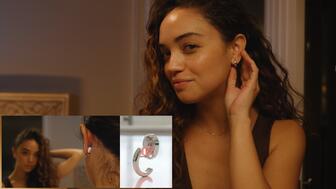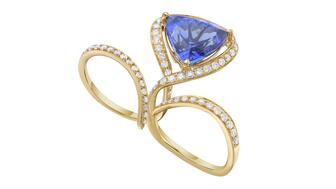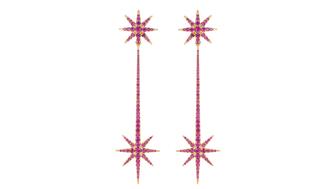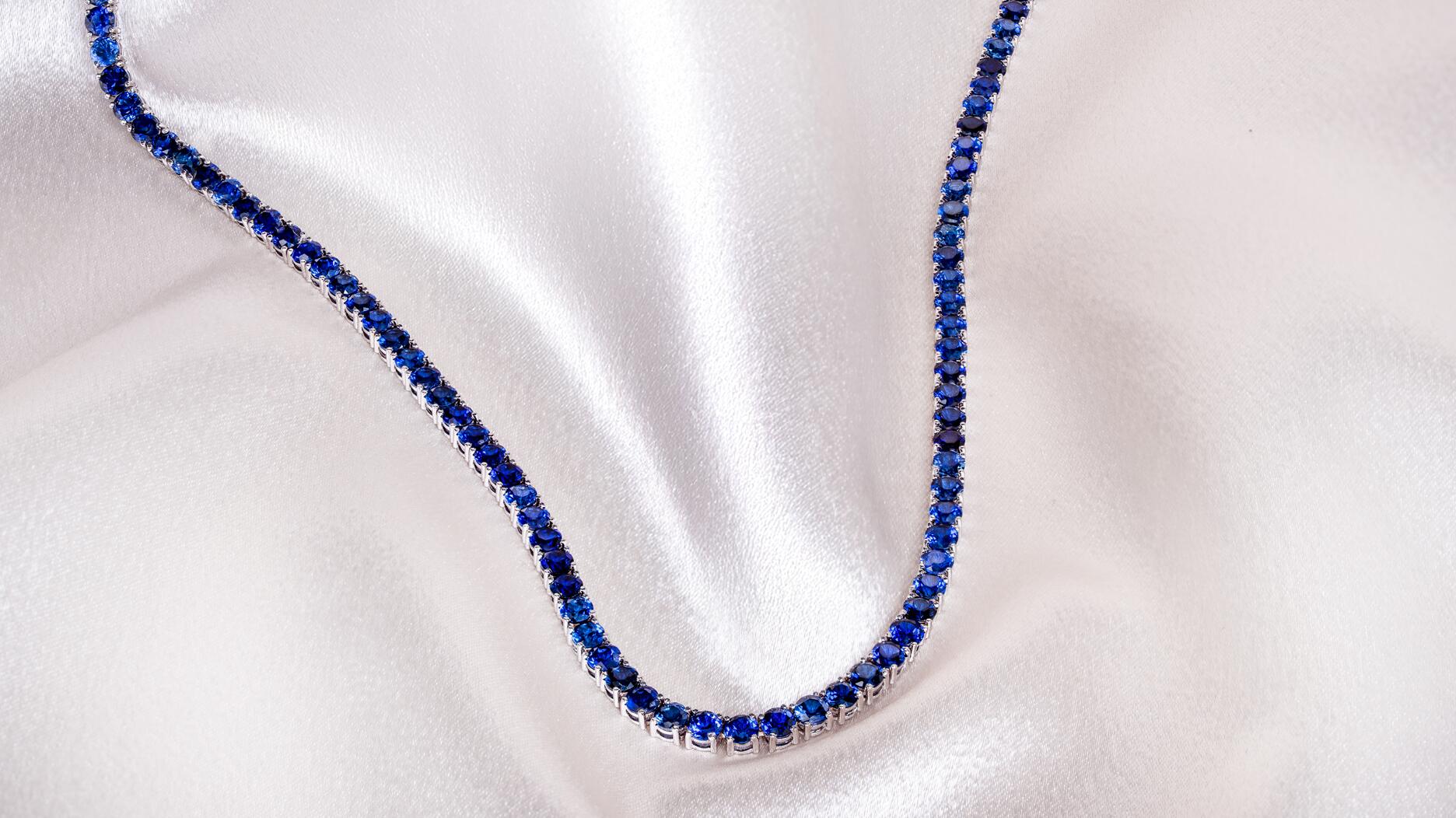Carlos Jose Hernandez and Joshua Zuazo were sentenced to life without the possibility of parole in the 2024 murder of Hussein “Sam” Murray.
Shaking Up the World of Watchmaking: A Chat with Fiona Krüger
The Swiss watchmaker on being a woman in a male-dominated industry, her skeleton aesthetic and the place of watches in the world today.

I have never had a reaction to a watch as I had with one of Fiona Krüger’s..
While I can appreciate a nice timepiece, admittedly watches aren’t my beat and I don’t know a lot about them.
But maybe that’s why her watches spoke to me as soon as I saw them; they’re definitely not like anything else on the market.
I first saw them on Instagram, where I instantly began scrolling through the brand’s page and became deeply entrenched. But the more I dug into the brand and its story, the more intrigued I was.
Originally from Scotland, 31-year-old watchmaker Fiona Krüger is the opposite of what I think most people would picture when they’re thinking about Swiss watchmakers--she’s young, female and came from outside the industry.
But to hear her tell it, these factors actually turned out to be advantages as she finds her place in the market and builds up her brand.
She started Fiona Krüger Timepieces about six years ago and now produces an amazing collection of skull-shaped skeleton watches, including a few that use Super-LumiNova to glow in the dark and give them a “split personality,” she says.
The watches are limited edition, with Kruger saying that last year they produced around 40 total. Her current collection is priced between $15,500 and $28,800 at retail.
While her company is based in Switzerland, Fiona and her husband live 45 minutes north of Basel, in France. She started exhibiting at Baselworld in 2016 and also had a presence there this year.
I hopped on the phone with her recently to chat about the industry, her watches and where she plans on taking her brand. (This interview has been edited for length and clarity.)
National Jeweler: Tell me a little bit about how you got into watches.
Fiona Krüger: I got into watchmaking by complete accident. I did my BA in fine art, specializing in sculpture. A few years later I did a master’s course in Switzerland for product design for the luxury industry, where I first learned about watchmaking. Audemars Piguet was one of the sponsors of the course at the time, and they asked our class to design a watch for their brand.
Thankfully we did a number of visits. The first one was to the AP manufacture. The second one was to the Patek Philippe museum in Geneva. I totally fell in love with
When I was doing my research, I found that theme of mortality played an important role in really fine watchmaking for centuries, and skull-shaped pocket watches were like fashion accessories for women in the 16th century. I also had my own personal memories from my childhood in Mexico City, and the Day of the Dead is a vivid memory of mine. So for me, it became obvious that I wanted to do a watch around that theme, and the skull was the best symbol to explain all of that.

I ended up making a prototype for my master’s. That was back in 2011. A couple of pictures (of it) were online, and within a year I had like 200 emails from people asking if they could buy it. It wasn’t a real product, but that made me think it’s more than just me that thinks this is interesting. I spent two years trying to find the right suppliers. Things officially started around October 2013, and I had the first pieces by December 2013.
NJ: What has it been like for you, being a female in a male-dominated industry, and what challenges or advantages do you think it gives you?
FK: Originally, I thought that being a woman might be a massive hurdle that I’d have to overcome because if you’re looking at an industry and you don’t see anybody that looks like you, you think, hold on a minute. Why is that? But actually I think it has been an advantage in a sense because, from the retail side to the supply side, people weren’t used to having discussions with somebody like me. It’s not like I’m some 40-year-old Swiss guy and they kind of already have this expectation as to how the discussion’s going to go or how to handle it.
There is also an element that being blissfully ignorant was a big help because I didn’t know what the rules were in terms of designing and creating a product. I didn’t know how difficult it would be, and if somebody had given me a list of all the stuff you to have to deal with and all the things you’ve got to overcome, I probably wouldn’t have started because it’s a hell of a lot. But it’s actually been great.
NJ: Do you target female consumers or feel that you and your brand naturally speak to a very certain demographic?
FK: That’s the thing--I don’t even know if we do. I get asked this by retailers a lot because they’re trying to figure out which of their clients they should be targeting. But everybody recognizes a skull, so it crosses cultures and ages and all that sort of thing. People either relate to it or they don’t, regardless of their age or gender.
I sold my first watch to a guy from Mexico who’s in his 50s. That wasn’t a massive surprise because of the whole Day of the Dead thing. The second watch I sold was to a woman in China who’s about 23. Exactly the same watch. And everybody said, you’ll never sell those in Asia, they’re much too big. And that wasn’t the case. We were in Japan last year, and the new Petite Skull blue, everybody was like, “Oh, that’s a smaller size. Is that your lady size?” I don’t make men or women’s watches. I make a product and whoever likes it, likes it. They’re all unisex. It’s my personal opinion that the whole men’s watches and women’s watches idea is a really outdated concept.
NJ: Do you have a favorite watch that you’ve designed?
FK: I like the Petit Skull with the blue dial because that’s using guilloché, which is a super-traditional watchmaking decorative technique. That blue is also very classic, but then the watch itself is not a classic watch at all, so I really like the contrast between those two ideas.
And also the big Celebration Skull, it just makes me smile when I look at it. It’s this big multicolored thing. If you’re wearing that, it doesn’t matter how crap your day’s been--if you look at it, you just smile.

NJ: How was Baselworld this year for you?
FK: For me it was great, but then, again, if I put it into context, I’m in a bit of a bubble because I’m in Les Ateliers, which is kind of where all the independent brands are and it’s almost like a little mini-fair within the fair itself. Up there, where you have all the independents, it was busy a lot of the time. It’s more niche, and I think people come up there to have a look because that’s where anything that’s really creative happens.
NJ: What kind of presence do you have in the U.S.?
FK: I’m with Westime in California. We’re in their L.A. and La Jolla boutiques. I’m also with Provident Jewelry down in Jupiter, Florida, and Oster Jewelers in Denver.
NJ: What opportunities do you think the U.S. market could present? Is this a focus for you at all?
FK: It definitely is. We did a big U.S. tour at the end of last year … to have a really good overview of things.
I feel like in the States, people are more adventurous. They’re more open to something that’s a little bit different and really creative, and they really get the personal story and that side of things. Because last year was so bad for the watch market in general, those are always really interesting times because you get lots of new opportunities coming up. People have to be more creative because the market is bad, so you can’t be lazy. You have to come up with new ways of doing things.
NJ: Where do you think your brand will go from here?
FK: The skull collection was the collection that launched the company, but I’m currently developing the first piece from the second collection that we’ll be bringing out, which won’t have anything to do with skulls. It’s starting from a concept that I think is relevant to do with watches and then developing a range of designs off of that concept. As the brand develops, we’ll probably end up with between say three and five different collections, each one with its own concept at the core of it.
NJ: As you develop new collections and move on from the skulls, what will be the part of the brand’s identity that will keep all the lines cohesive?
FK: Our brand tagline, if you will, is “an artistic approach to haute horology.” I could be doing anything (artistic), painting or sculpture, but it just happens to be that it’s watchmaking. My way of thinking and my approach is the same as if I was making a painting or a sculpture. The red line that runs through everything is really that approach to it. So even though the shape will be different and the concept is different, that approach comes through in the design of the piece and that will be what ties everything together.
The Latest

Yood will serve alongside Eduard Stefanescu, the sustainability manager for C.Hafner, a precious metals refiner in Germany.

The New Orleans jeweler is also hosting pop-up jewelry boutiques in New York City and Dallas.

How Jewelers of America’s 20 Under 40 are leading to ensure a brighter future for the jewelry industry.

Set in a Tiffany & Co. necklace, it sold for $4.2 million, the highest price and price per carat paid for a Paraíba tourmaline at auction.


The jeweler’s “Deep Freeze” display showcases its iconic jewelry designs frozen in a vintage icebox.

Take luxury gifting to new heights this holiday season with the jeweler’s showstopping 12-carat sphene ring.

Roseco’s 704-page catalog showcases new lab-grown diamonds, findings, tools & more—available in print or interactive digital editions.

This year's theme is “Unveiling the Depths of the Ocean.”

In its annual report, Pinterest noted an increase in searches for brooches, heirloom jewelry, and ‘80s luxury.

Starting Jan. 1, customers can request the service for opal, peridot, and demantoid garnet.

The 111-year-old retailer celebrated the opening of its new location in Salem, New Hampshire, which is its third store in the state.

The new catalog features its most popular chains as well as new styles.

The filmmaker’s personal F.P. Journe “FFC” prototype was the star of Phillips’ recent record-setting watch auction in New York.

The new location in the Design District pays homage to Miami’s Art Deco heritage and its connection to the ocean.

Inflations, tariffs, and politics—including the government shutdown—were among consumers’ top concerns last month.

“Longtime favorite” presenters, as well as first-time speakers, will lead talks and workshops at the annual event in Tucson next year.

Silas Smith of Meridian Metalworks won the challenge with his pendant that blends Australian and American landscapes.

The sale of the 31.68-carat, sunset-hued stone was part of Sotheby’s first series of events and auctions in Abu Dhabi.

Most customers who walk into your store this month have made up their minds. Your job is to validate their choice, Emmanuel Raheb writes.

The collection features characters and motifs from Ukrainian folklore, including an enchanted mirror and a magic egg.

MatrixGold 3.11, the newest version of the jewelry design program, offers more flexibility, precision, and creative control.

The pavilion will be part of the 2026 JA New York Spring show, scheduled for March 15 to 17.

Kadet, a 1994 National Jeweler Retailer Hall of Fame inductee, helped grow the family-owned retailer in the Chicago area and beyond.

Billed as the world’s smallest wearable, Lumia Health’s new smart earrings have a health tracker subtly embedded in the back.

Don’t let those with December birthdays feel blue. Help them celebrate their month with blue zircon, turquoise, and tanzanite.

The new pink sapphire version of the piece dances with its wearer in the brand’s “Icons After Dark” holiday campaign.



























